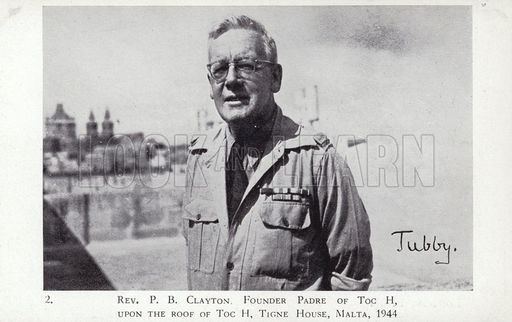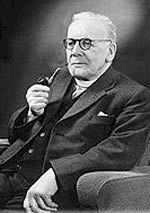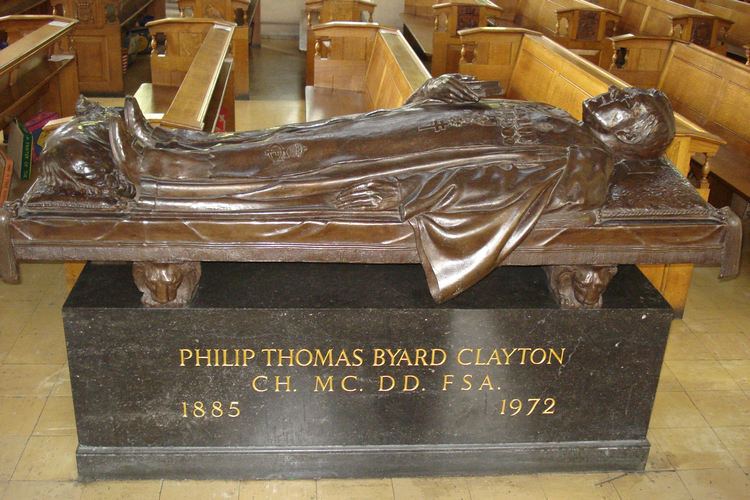Name Tubby Clayton Died December 16, 1972 | ||
 | ||
The Reverend Philip Thomas Byard Clayton CH MC (known as "Tubby Clayton") (12 December 1885 – 16 December 1972) was an Anglican clergyman and the founder of Toc H.

Life and career

He was born in Maryborough, Queensland, Australia of English parents who brought him back to England when he was two years old. He was educated at St Paul's School in London and at Exeter College, Oxford, where he obtained a First in Theology.

After ordination as a priest of the Church of England, Clayton served as curate under Cyril Forster Garbett at St Mary's Church, Portsea, from 1910 to 1915. He then became an army chaplain in France and Flanders where, in 1915, he and another chaplain Rev. Neville Talbot opened "Talbot House", a rest house for soldiers at Poperinge, Belgium. It became known as Toc H, this being signal terminology for "T H" or "Talbot House". It closed temporarily in 1918 when the German front had drawn too close.

The spirit of friendship fostered at Toc H across social and denominational boundaries inspired Clayton, the Rev. Dick Sheppard, and Alexander Paterson to set out in 1920 what became known as the Four points of the Toc H compass:

- Friendship ("To love widely")
- Service ("To build bravely")
- Fair-mindedness ("To think fairly")
- The Kingdom of God ("To witness humbly")
This followed the foundation of a new Toc H House in Kensington in 1919, followed by others in London, Manchester, and Southampton. The Toc H movement continued to grow in numbers and established, also, a women's league. In 1930, Clayton led Toc H into creative support of the British Empire Leprosy Relief Association.
From 1922 to 1962, Clayton was Vicar of All Hallows by the Tower in Tower Hamlets, London. While working in the area, he helped to devise the Tower Hill Improvement Scheme (with Lord Wakefield of Hythe). His work also brought him into contact with the East End of London and its frequently harsh and impoverished conditions. Two aspects of his work converged in 1940 when All Hallows was devastated by bombing during the Blitz and Clayton played a primary role in fundraising for its restoration, joining this to a general drive for raising money for the similarly devastated East End. In 1948, Clayton and John G. Winant (the latter, at that time, the American Ambassador to the United Kingdom) set up the Winant Clayton Volunteer Association to bring young Americans to London for volunteer work. In 1959, the association helped to send British volunteers to America to do similar work, setting up a mutual exchange scheme that has continued to this day.
While remaining based at All Hallows, Clayton travelled widely in Britain and throughout the British Empire promoting Toc H and encouraging the foundation of new branches. He was also the chaplain to the British Petroleum Company - a duty which overlapped with his chaplaincy to the Anglo-Saxon tanker fleet during World War 2 (a position which he was particularly proud of).
He was the subject of This Is Your Life in 1958 when he was surprised by Eamonn Andrews at the BBC Television Theatre.
Tubby Clayton died in 1972. He is honoured in The Museum of Army Chaplaincy and in the "Talbot House" in Poperinge, Belgium.
